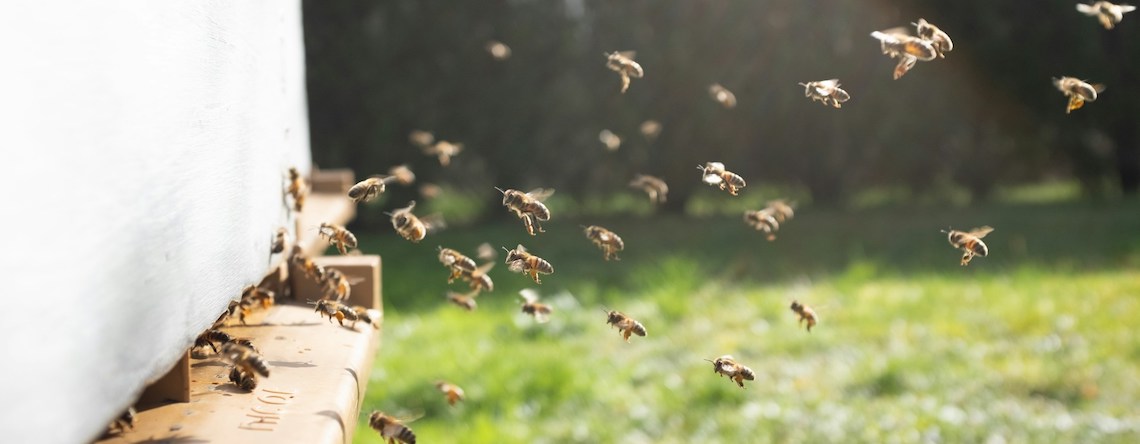
Bee photo by Damien Tupinier with unsplash.com
Written by Frank Lopez
Beekeepers, farmers and growers are all concerned about a widespread collapse of bee colonies across the nation.
Beekeepers, as of early February, have seen a loss rate of 70-100% of their colonies over the past 12 months, according to a survey from Project Apis m., a nonprofit that supports bee research. It was produced with help from the American Beekeeping Federation and American Honey Producers Association.
While survey results are still being gathered, information collected from 234 beekeepers found average recent losses of more than 50%, with a combined financial loss of more than $139 million.
These nationwide bee colony losses are raising concerns about the stability of pollination services crucial to the nation’s food supply. Much of the nation’s bee colonies are brought to the Central Valley at this time to pollinate during the bloom.
Desperate times
Ben Zenter, owner of 559 Honey Company in Kingsburg, said there are so many factors contributing to the losses that even beekeepers don’t know what exactly is going.
Zenter provides honey and professional beekeeping services. He said many farmers were unable to secure the bees they needed to pollinate almonds, blueberries, plums and cherries.
For almond growers, the average price to lease a colony is $185-$200, but with the shortage this year, prices are up to $240-$260, Zenter said.
“There were some guys saying they would take whatever they could get — whatever size they could get — and pay whatever we want. But we had to turn some away because we just couldn’t find the hives,” Zenter said.
Zenter said the pallets often seen at the edge of orchards typically have four boxes, with a colony consisting of two boxes. Each box has 15,000-20,000 bees in the winter and about 35,000-40,000 bees in the summer.
One of those pallets is worth about $1,000 dollars. He said insurance doesn’t cover bee losses for keepers, with farmers often refusing to pay as they didn’t receive their full service.
He said that 559 Honey Company runs about 800-900 colonies, and manages about 45,000.
Market pressures
Bee colony theft is also a major concern for beekeepers and growers, with Fresno County seeing about 1,000 hives stolen this year alone, Zenter said.
The sheriff’s office responds, but they prioritize issues with people over property. Even if someone is apprehended, Zenter added, chances for prosecution are slim.
He noted a case in Tulare County where a man was apprehended in possession of stolen bees, but the courts were not able to prove he actually stole them.
The almond industry has felt the impact of colony collapse, as they did back in 2006 with similar loss rates. Zenter said Blue Diamond Growers released figures that 15-20% of almonds did not get covered with bees because they were not available.
“This is going to drive up the price for almonds,” Zenter said. “No bees, no nuts.”
Watching the buzz
BeeHero, which is headquartered in Del Rey, makes high-tech monitoring systems that track bees in the field.
CEO and founder Omer Davidi said some beekeepers are reporting mortality rates as high as 70%, with an average mortality rate about 65%.
He said the industry has grown accustomed to a collapse rate of more than 40% each year. But this year’s losses are different.
“Whether it comes from drier or colder winters or lack of food resources for the bees just before the winter — we tend to believe at this point that it’s probably an aggregation of all those stressors we’ve seen in the last 10-15 years, Davidi said.
A mystery cause could also be at play.
He said BeeHero is working with government agencies and universities to make its data accessible to help understand what’s happening and to support the industry.
Davidi also pointed out the impact of the Varroa mite, an external parasitic mite that attacks and feeds on bees, with the pest spreading across the nation over the last 10-15 years.
One concern with the Varroa mite is that they also spread viruses, leaving beekeepers and growers to question whether to handle the mite, or handle the viruses they spread.
Time will tell
One thing keepers do know is that these kinds of losses are unsustainable.
“If they have the financial resources is one question, and the second is whether they have biological capabilities to do it. Beekeepers are struggling and don’t have access to cash and working capital as a risky agricultural business, and don’t have enough hives to split to overcome the dead outs,” Davidi said.
He said that the U.S. is experiencing a shortage of half a million hives to support the pollination needs of 2025.
These shortage are going to challenge the pricing mechanism for bees, and Davidi said there are going to be some beekeeping companies that won’t survive this year, which could lead to increased prices for pollination services.








